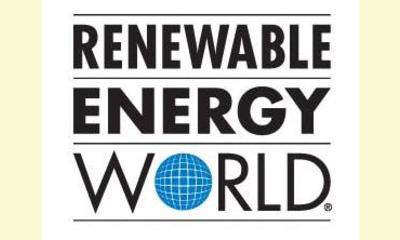|
|
Policy Support for Solar Power Grows in Sub-Saharan Nations
an article by Robin Yapp for Renewable Energy World (reprinted by permission)
Much of sub-Saharan Africa has experienced
remarkable economic growth since the start of the
21st century. Six of the ten fastest-growing
economies worldwide between 2000 and 2010 were in
the region and, if current growth rates continue,
Africa's GDP should increase three-fold by 2030
and seven-fold by 2050.

click on photo to enlarge
What is more remarkable is that the continent
continues to face energy sector problems,
inevitably holding back growth. It is clear that
if sub-Saharan Africa is to lift its population
out of poverty, alternatives to dependence on
fossil fuels and hydropower are badly needed.
Price fluctuations in the former have hit Africa
especially hard, while the latter can grind to a
halt in times of drought. These problems make the
continent's vast potential for solar power
essential to discussions about future energy
policy.
According to a report by the International
Renewable Energy Agency (IRENA), active promotion
of renewable energy could see its share of African
electricity generation rise from 17 percent in
2009 to 50 percent in 2030 and nearly 75 percent
by 2050. Such a scenario would involve installed
renewable capacity of around 800 GW by the mid-
point of the century, led by PV with an estimated
245 GW, wind at 242 GW, hydropower 149 GW and
concentrated solar power 94 GW.
The focus for solar power until now has been very
much on north Africa, partly due to its potential
to export electricity to Europe that has been
highlighted by the Desertec project. But solar
potential stretches far beyond the Sahara Desert.
More than 80 percent of Africa's landscape
receives almost 2000 kWh/m2 per year and many
countries receive 325 days of bright sunlight
annually. With Africa's population expected to
double to two billion by 2050, the need to begin
tapping this resource is urgent.
Figures from the World Bank show that power
tariffs in most parts of the developing world lie
in the range of US$0.04-$0.08/kWh. Yet in sub-
Saharan Africa the average is $0.13/kWh. African
economies on average lose 2.1 percent of GDP
annually as a result of power shortages. But with
rapid reductions in technology costs and the
prospect of increased security of supply,
investment in solar projects in parts of sub-
Saharan Africa could finally awaken.
South Africa, the continent's largest economy,
gets around 90 percent of its electricity from
coal but is leading the way as it seeks to
increase capacity after many years of under-
investment. At the same time, the government's
Integrated Resource Plan calls for 42 percent of
the nation's electricity supply to come from
renewables by 2030. Some 8400 MW of PV capacity
and 1200 MW of CSP should come online by that date
through independent power providers, opening up a
host of opportunities for international firms.
(This article is continued in the discussionboard)
|








|
DISCUSSION
There is no question yet associated with this article.
* * * * *
LATEST READER COMMENT:
(The following is continued from the main article listed above.)
But many poorer countries face far greater difficulties. According to the World Bank, an energy crisis looms for 25 countries in sub-Saharan Africa that are hit by frequent blackouts. Just 24 percent of the region's population has access to electricity, compared with 40 percent in other low-income countries. Excluding South Africa, the region's entire installed capacity is only 28 GW, equivalent to that of Argentina.
In some countries the prospects are remote that the state will promote grid-connected renewables, as these nations have no incentives or legislation. But in others there have been encouraging signs of attracting foreign investment. One of the most testing issues is securing finance when most development banks appear to view renewable energy projects with suspicion, leaving private investors wary of shouldering too much risk. Another is implementing solar feed-in tariffs (FiTs) in countries blighted by poverty.
Dr. Xavier Lemaire, coordinator of the Sustainable Energy Regulation Network (SERN) at the University College London Energy Institute, said: “Solar is the most expensive renewable technology but the cost can go down 30 percent or 40 percent a year. . ...more.

|
|








